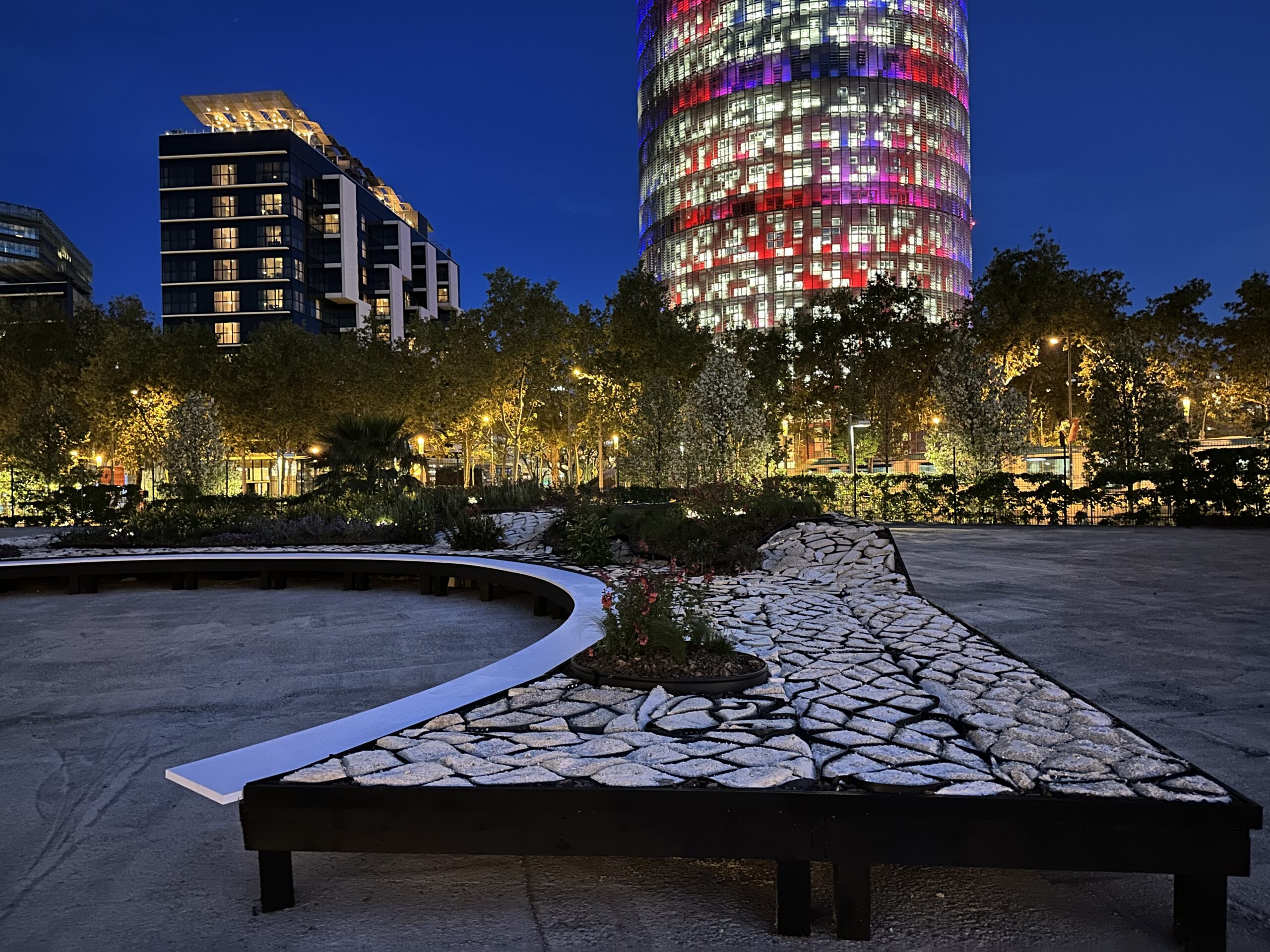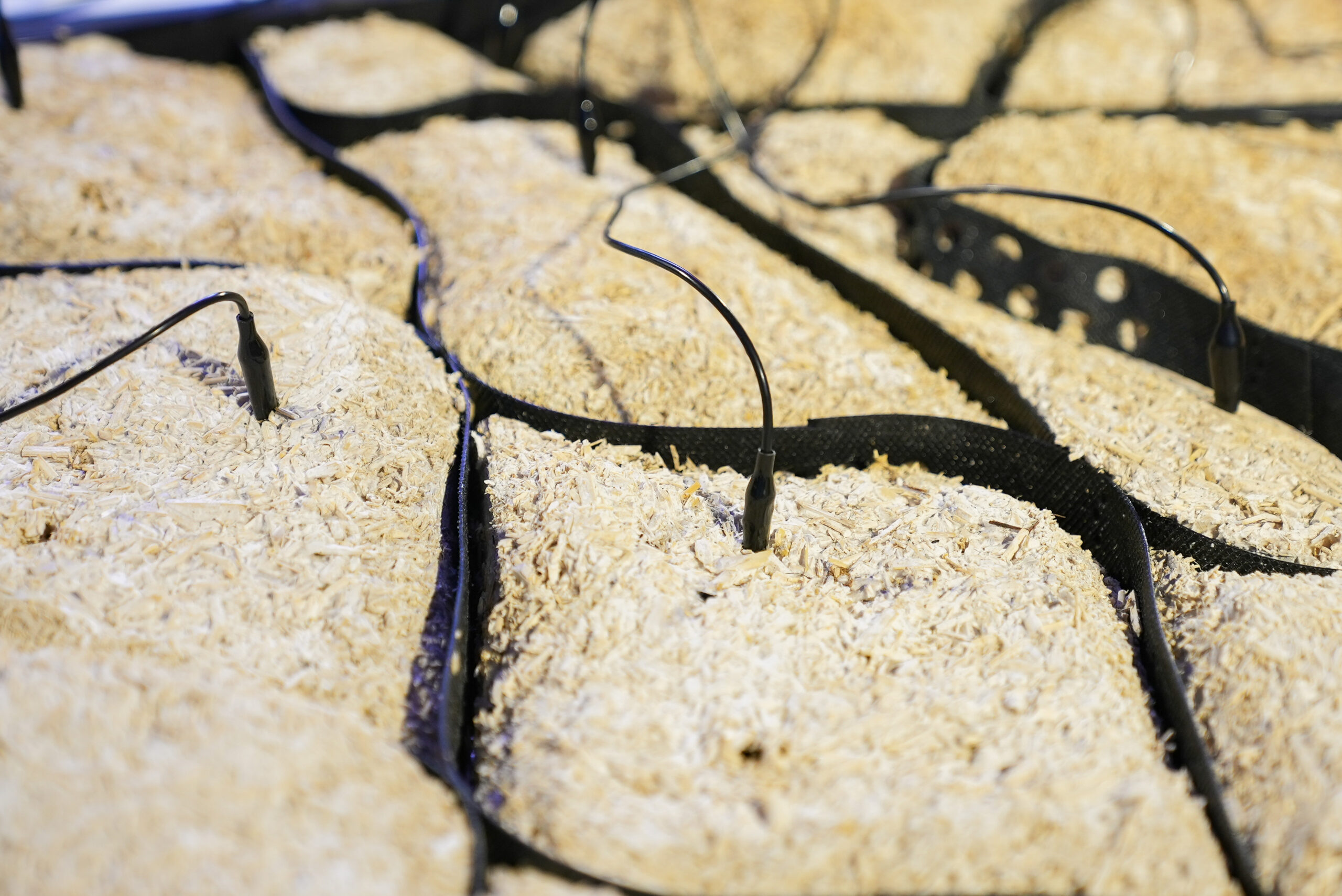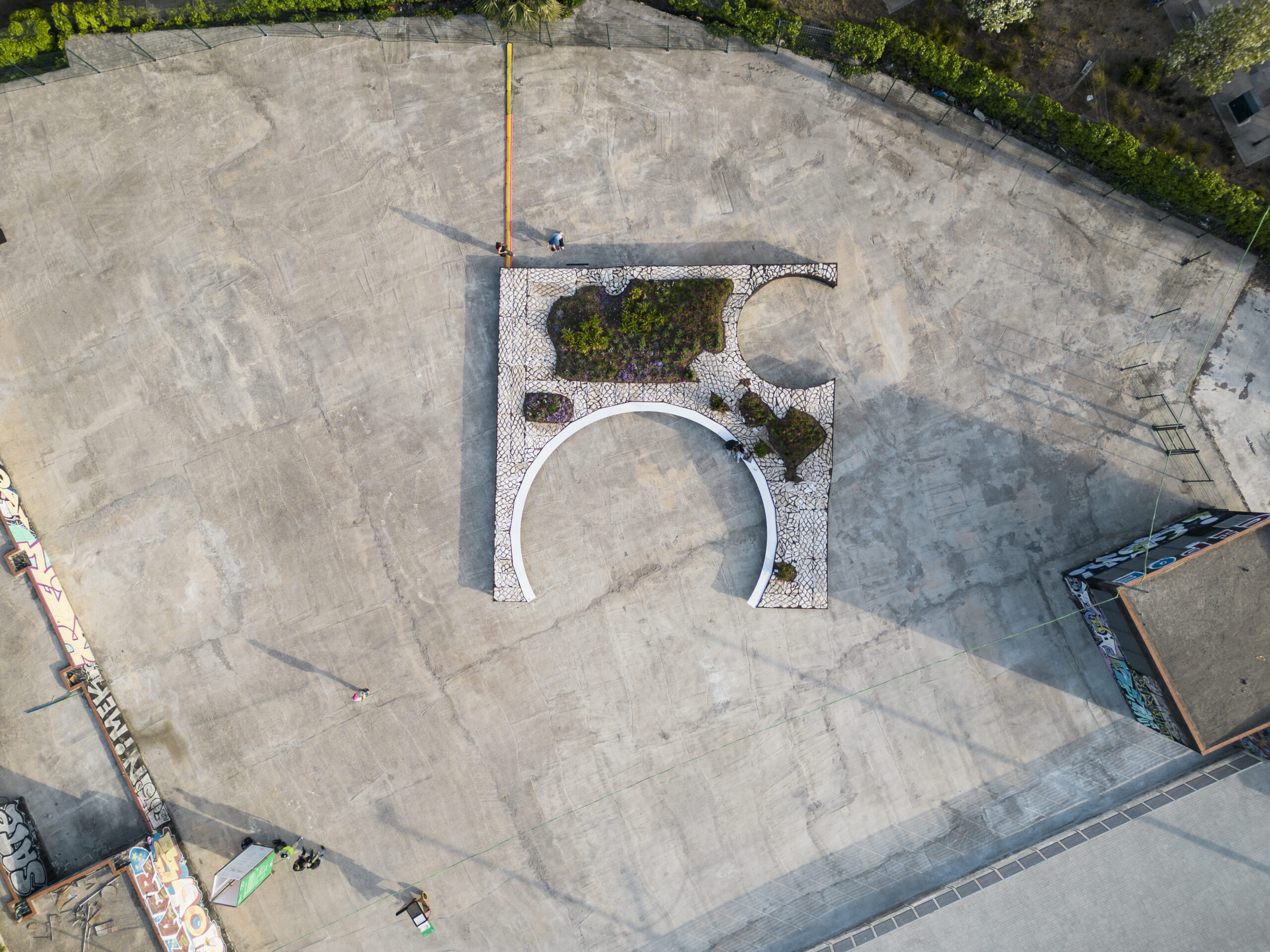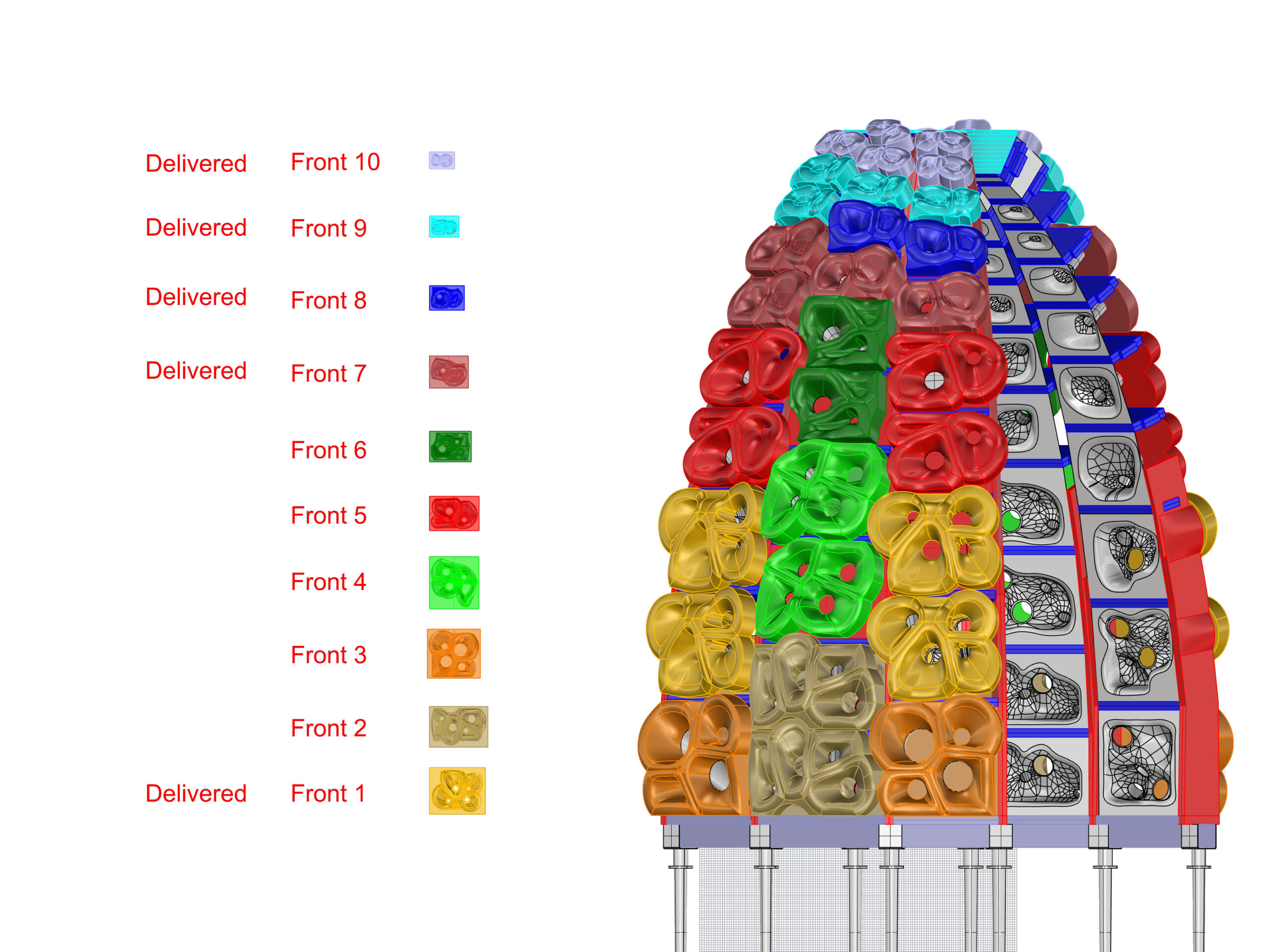Hempcrete Habitats and Feral Surfaces

Ariane Harrison, Coordinator, MS Urban Design, Yuxiang Chen, Lead Designer, Harrison Atelier
School of Architecture
Two projects demonstrate material approaches to sustaining urban biodiversity, an increasingly critical issue as human population and urbanization increase the effects of the 6th mass extinction of species. Cities can become biodiversity reserves and Harrison Atelier’s work seeks to demonstrate the feasibility of designing novel habitats. Feral Surfaces, a mycelium-based installation in Barcelona in 2023, and Hempcrete Habitats, an installation underway on Governors Island opening May 2024.
Harrison Atelier’s Feral Surfaces, a mycelium-landscape for the 2023 MODEL Barcelona Architecture Festival, magnifies the need for native pollinator habitat within the biodiverse city. Its circular cut-outs recall the markings of the leaf-cutter bee, one among Spain’s estimated over one thousand native bees. These bees live, not in hives, but holes in the ground, wood and reeds. Elusive and hard to monitor, these important pollinators are threatened by habitat loss. Solitary bees are intensely local, foraging for flower pollen no further than 50 meters from their nest, which equates to the length of each side of the installation.
The Hempcrete Habitat Arch proposes an analogous habitat, monitoring station, and entry to the The Bee Conservancy on Governors Island. In section, the archway offers a vertical ecology with nesting tubes for bees at its lowest rungs, plants and water catchment above and finally solar panels at the top; this off-the-grid system powers the cameras and microprocessors that comprise the data-gathering components of the pavilion. Images of native bees harvested by the embedded cameras feed a database trained to automate insect identification with the support of Microsoft’s AI for Earth program. The pavilion’s hempcrete drawers are slotted within a wood scaffold and contain nesting tubes for solitary bees and a solar-powered Arduino-based monitoring platform.
These projects seek to demonstrate approaches to multi-species urbanism that align with the UN’s Convention on Biodiversity and the Agenda 2030 for Sustainable Development.


